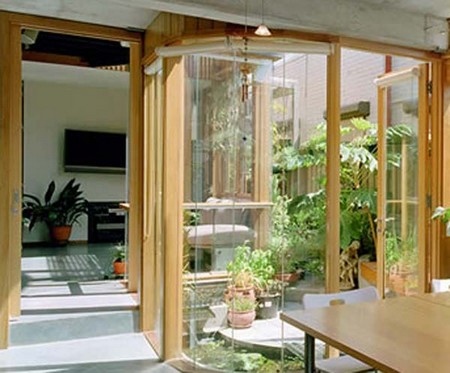Best Way to Improve Interior Air Quality with Ventilation
Good ventilation involves removing stale, polluted air from a house and replacing it with less-polluted air from outside. One of the main functions of ventilation is removing excess humidity (water vapour in the air), with the average family producing a surprisingly large amount. Other functions of ventilation include removing interior air pollutants, such as those produced during cooking, replacing oxygen as it is breathed in and used up, and removing carbon dioxide as it is breathed out.
Problems due to poor ventilation can occur when people try to “do the right thing” by introducing such energy-conservation measures as insulation and double- (secondary-) glazing. These measures seal up some of the normal routes of air into and out of the home, so reducing ventilation. As a result, this may lead to high levels of humidity and air pollutants.
Taking basic action
By taking the following into account any remedial action you take to improve ventilation will be more effective.
Defeating damp
Identify and deal with sources of damp. The main causes are penetrating damp, rising damp, and condensation. It is not always easy to diagnose what may be the cause(s), and even specialists don’t always get it right, so obtain professional advice from several specialist companies.
Improving insulation
Adding basic insulation will make your home warmer more comfortable, and less expensive to run. Insulation will also help to eliminate, or minimize, cold spots, which, in turn, will reduce condensation and associated mould growth.
Draught-proofing (or weather stripping)
If you make your home more airtight you will increase its comfort and save on energy. Draught-proofing (weather stripping) doors and windows is a good start, but there are other ways by which you can influence the amount of air that passes in and out of your home:
- When decorating, seal gaps under skirting (base) boards, around the edge of window frames, and under windowsills
- Check the ceiling for gaps where pipes enter the attic (loft) and draught-proof (weather strip) around the attic (loft) entrance
- Fill the cavity of the outside walls with insulation to stop unwanted air leakage, as well as reducing heat loss
However having done this, you will then need to pay more attention to your home’s ventilation to make sure that you have the right amount of air in the right place and at the right time.
Categories
Advertisements
Recent Articles
 How to Understand Bed Sizes – A Small Guide
How to Understand Bed Sizes – A Small Guide How to Select Some Must Have Kitchen Accessories
How to Select Some Must Have Kitchen Accessories Best Way to Change a Car Tire
Best Way to Change a Car Tire Best Way to Write an Affirmation
Best Way to Write an Affirmation Best Way to Take Charge of Your Financial Life
Best Way to Take Charge of Your Financial Life Best Way to Survive a Party When You Don’t Know Anyone
Best Way to Survive a Party When You Don’t Know Anyone Best Way to Stop Self Sabotaging Yourself
Best Way to Stop Self Sabotaging Yourself Best Way to Start Journal Writing
Best Way to Start Journal Writing Best Way to Speak with a Powerful Voice
Best Way to Speak with a Powerful Voice Best Way to Simplify Your Life
Best Way to Simplify Your Life Best Way to Respond to a Put-Down
Best Way to Respond to a Put-Down Best Way to Reduce Acne Breakouts
Best Way to Reduce Acne Breakouts Best Way to Recover from Dining Disasters
Best Way to Recover from Dining Disasters Best Way to Quit Your Job Gracefully
Best Way to Quit Your Job Gracefully Best Way to Make Your Own Website
Best Way to Make Your Own Website



Leave a Reply